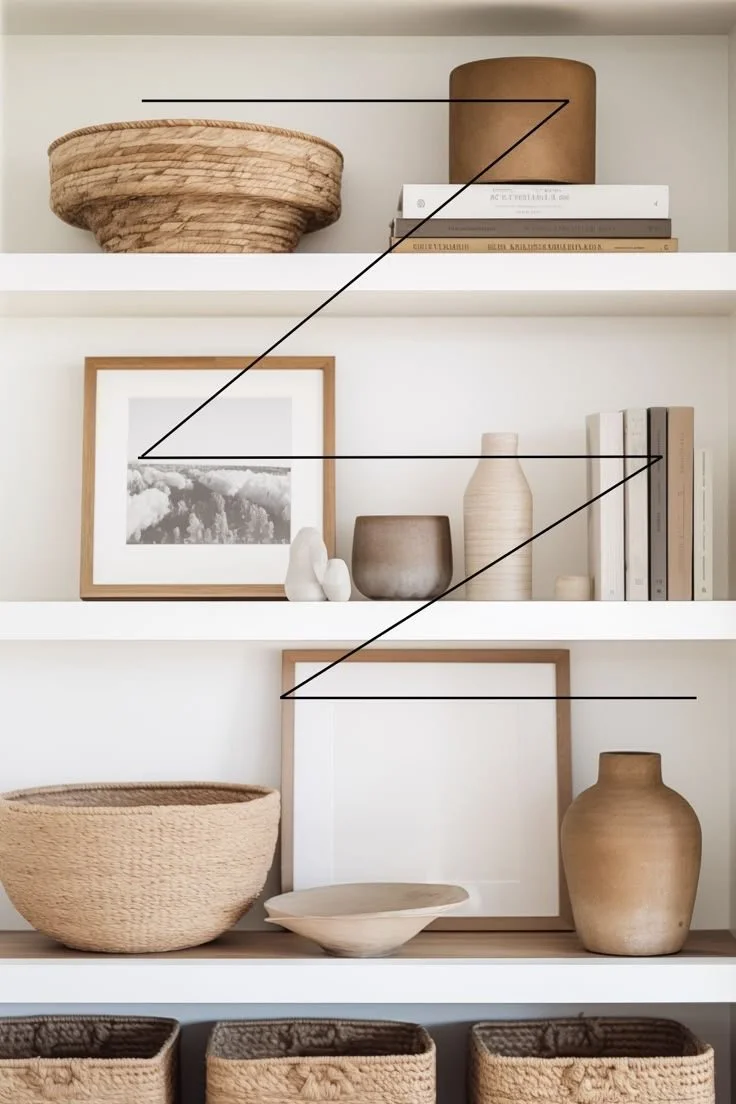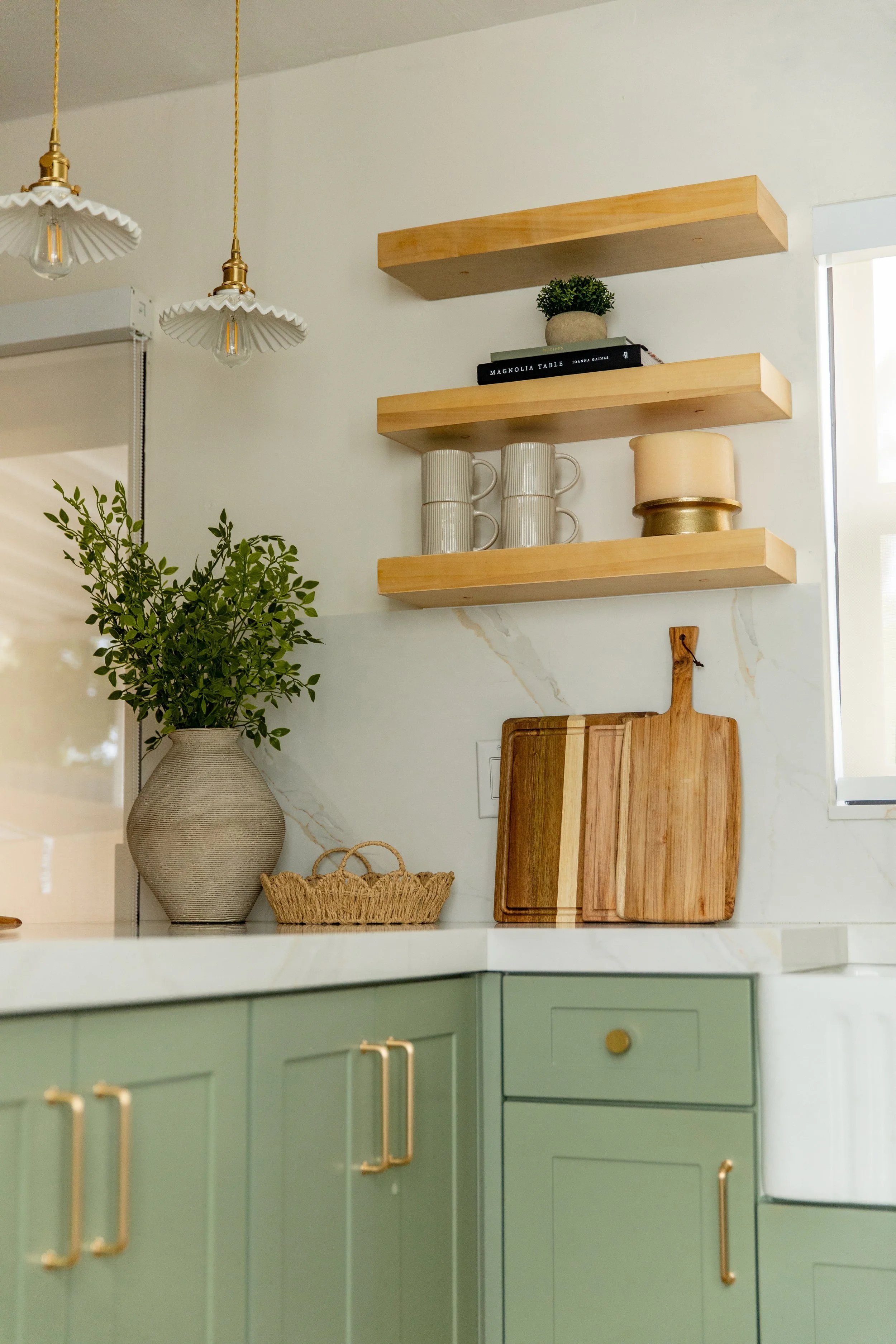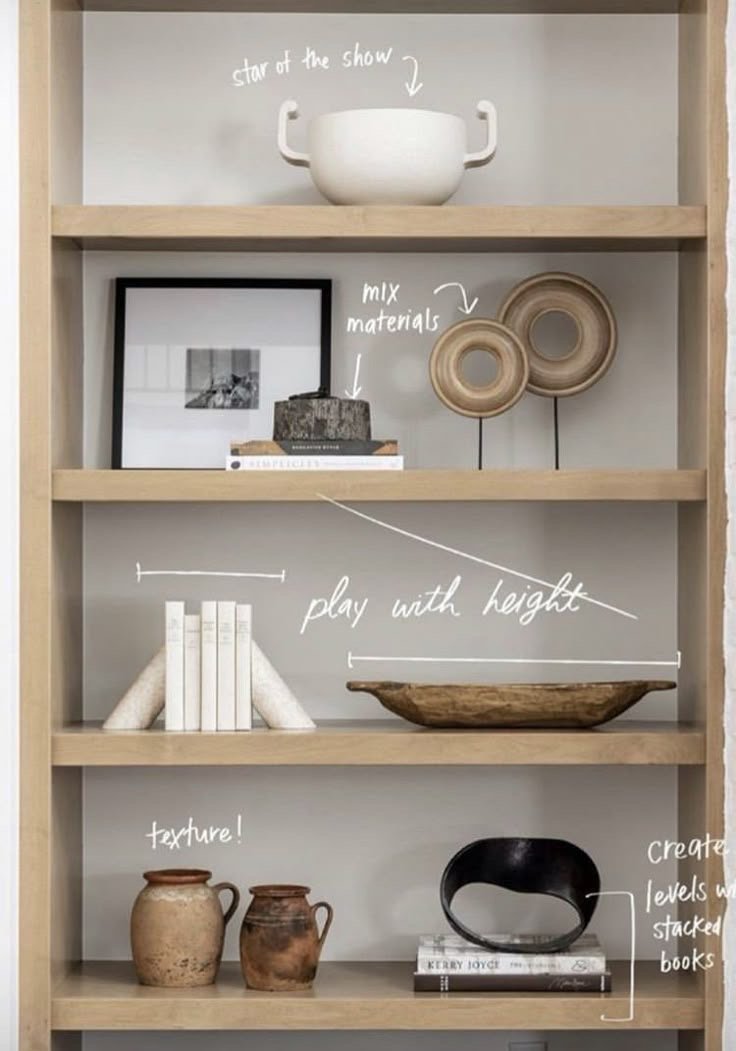How to Style Open Shelves (without clutter)
If you’re anything like me, I sometimes dread styling open shelves. I could sit there for hours, going back and forth, not knowing what looks good and what doesn’t. Shelf styling has to strike the perfect balance of full but not cluttered, styled but still effortless.
To make my life easier, I came up with a simple system that completely changed the game for me—and saved me both time and sanity. Here’s how you can do the same.
1. Start with a Clean Slate
Before anything else, clear off your shelves completely. This gives you a true sense of the space and helps you visualize what should live there.
Think of it as curating, not decorating—each piece you add back should serve a purpose or tell a story. Fewer, well-chosen items always look more elevated than a crowded collection.
2. Begin with Books
Books are my favorite starting point when styling shelves. Stacked or standing, they instantly give structure and rhythm. I like to place a few in the center and a few off to the sides—this creates a natural anchor and visual balance to build around.
Plus, books add warmth, color, and height variation—three elements that make any shelf feel intentional.
Pro tip: Stack your prettiest covers outward or remove dust jackets for a cleaner, tonal look.
3. Layer in Bowls and Vases
Next, I bring in ceramics and natural textures—think a sculptural vase or a beautiful stone bowl. I’ll place one on top of a stack of books or right next to it, then fill a vase with branches, or a bowl with moss, wood links, or decorative beads.
This step adds life and texture. You can easily swap the bowl or vase out for a small plant depending on the mood or season. Mixing materials (ceramic, glass, wood, metal) also helps avoid a flat look.
4. Add Personality with Decorative Objects
Here’s where you can have fun. Bring in the small touches that feel like you—a brass object, a carved wood sphere, a mini sculpture from a trip. These pieces bring your shelves to life and tell your story.
The key is restraint. Choose a few accents that stand out without overwhelming the space.
5. Balance and Breathing Room
Now, how do you know when it’s too much? Here’s my personal rule of thumb:
On one shelf, I like to center everything for a clean, grounded look. On the next, I switch it up—layer two pieces side by side or flush everything to one side (left or right). This simple alternation keeps things feeling intentional and full, but not chaotic.
Don’t forget negative space—it gives the eye room to rest and helps your beautiful pieces shine.
6. Revisit and Refine
Once everything is in place, take a step back. Does each item add something? Is the eye drawn smoothly from shelf to shelf? If it feels off, remove one or two pieces—you’ll be surprised how often “less” makes “more.”
And remember, shelf styling doesn’t have to be static. Rotate pieces seasonally, swap greenery, or switch out textures to keep things fresh and inspiring.
The Takeaway
You don’t need a million things—just a few key pieces and a formula that works. Books for structure, bowls and vases for texture, and decorative accents for character. With intention and a touch of creativity, your open shelves can look effortlessly styled, not cluttered.













